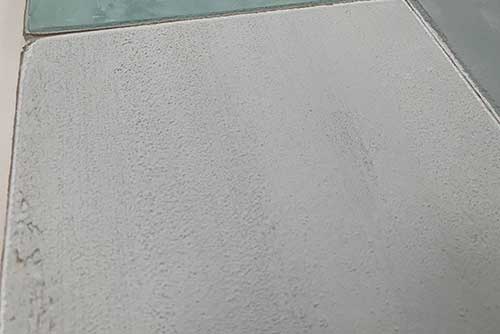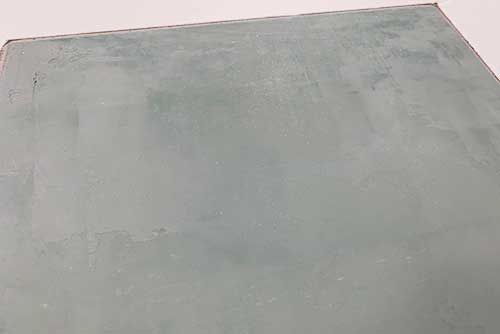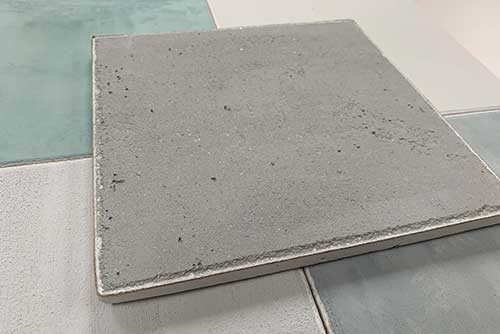Venetian Plaster in Historic Structures


Historically speaking, Venetian plaster applications were thin layers of pigmented lime plaster applied over plaster or masonry substrate, giving the appearance of aged, rustic plaster work. Dating back almost 10,000 years, lime plaster is one of the oldest and, for millennia, most common finishing techniques. Popular throughout Italy, specifically in the north regions, this ancient plaster has enjoyed numerous resurgences of popularity; under Roman rule, the European Dark Ages, the Italian Renaissance, and various Italian-revival movements.
The original Roman era recipe greatly mirrored that of true lime plaster, and it was usually applied over stone or brick substrate as a finishing technique—the often-bright white or light tan coloration carried light well into darker areas of a building. To produce lime plaster mined limestone had to be cooked in a kiln at temperatures well over 1000 degrees Celsius. The addition of heat creates a reaction that transforms limestone (calcium carbonate) into quicklime (calcium oxide). Next, is the process of hydration where water is added and creating calcium hydroxide. Under ancient Roman law, the slurry mixture resulting of the hydration process had to be aged for no fewer than three years. The slaked mixture is mixed with fine stone dust (often marble dust or quartz). This base putty can be made into many different kinds of finishing plaster with the addition of different compounds, pigments, and application patterns. Since water molecules are bonded directly to the lime, too much water will prevent the compound from setting. A properly mixed lime putty is applied to the surface and sets when carbon dioxide in the atmosphere interacts with the lime, creating calcium carbonate byproduct.
Venetian plaster has been a popular choice as it offers the benefits of lime plaster, without the complex lime plaster application process. Lime has many innately desirable properties, including that it is naturally mold and mildew resistant and it can help regulate humidity and air quality within a space by interacting with carbon dioxide in the air. Moreover, the durability of lime and the natural tonal variations in color helps to minimize the noticeability of scratches and nicks. Lastly, since the application of lime is often only two or three very thin coats, a painter, rather than a master plasterer can create this rich finish—greatly reducing both time and cost. Multiple thin applications made it easy for painters to apply the finish on walls, floors, and ceilings.




Samples of Venetian Tiles
Common Historic Applications:
Ancient Egypt: usually reserved for the royal court, the lime-based plaster was applied in multiple thin layers directly on stone substrate. It was commonly used on passages within pyramids and tombs as a base coat on which murals were added. As many burial vaults were deep below the ground in a region with low water tables, the Venetian plaster help preserve the contents within these chambers, and regulated the internal conditions of the tombs for centuries.
Ancient Rome: diverse in its application, it often served as a finishing technique in communal areas, with the principle purpose being a means of carrying light. Similar to ancient Egypt it served as a base on which additional embellishments were added. More important spaces, or those belonging to the privileged, often has true lime plaster applied.
Italy (Renaissance and revival eras): with the rise of various fine art mediums, plaster served as a purely background aesthetic. Inclusions or marble dust or highly buffed finishes helped carry light well and glowed under candle light. While not a marbleizing finish, the inclusion of both flecks, dust, and pigmentations tented to give a similar effect.
Domestic applications of the plaster historically were extensive, as Venetian plaster was a far faster way of achieving a lime plaster finish. Often popular in store rooms, vegetable cellars, bathrooms, and kitchens the finishing techniques popularity and uses depended largely on geography. Similarly, regional weather and atmospheric conditions often dictated color stain and stone additives included in the final mixtures. Popular with building styles that emphasized durable long-lasting materials, like Tudor, Greco and Roman Revival, it often was complimented by stone and masonry. As time progressed and building technology improved, Venetian plaster morphed from a helpful means of regulating conditions within a space, to a purely decorative technique.
Given this change in use, there are now many kinds of polymer-based compounds offering the look of real Venetian lime-based plaster that can be more easily applied and have faster setting times. The application process shifted around the turn of the last century from craftsman to painters. Currently, Venetian plaster is regarded as being more of a decorative arts finish than an ornamental plaster finish. Modern mixes are formulated for specific intended uses—some are optimized for pigment retention, others can be buffed to a mirrored finish, and some hold three-dimensional texture will. Though it is worth noting, these modern compounds and applications are often remarkably different from their historic roots.
For applications where true lime plaster is not feasible or inhibitive, Venetian plaster has always been a time-honored finishing process. Though modern applications are significantly different than historic applications as true Venetian plaster is lime-based and has been nearly unaltered since the time of the ancient Egyptians.




Samples of Venetian Tiles
If you are in need of plaster restoration or repair services, please contact Canning.
